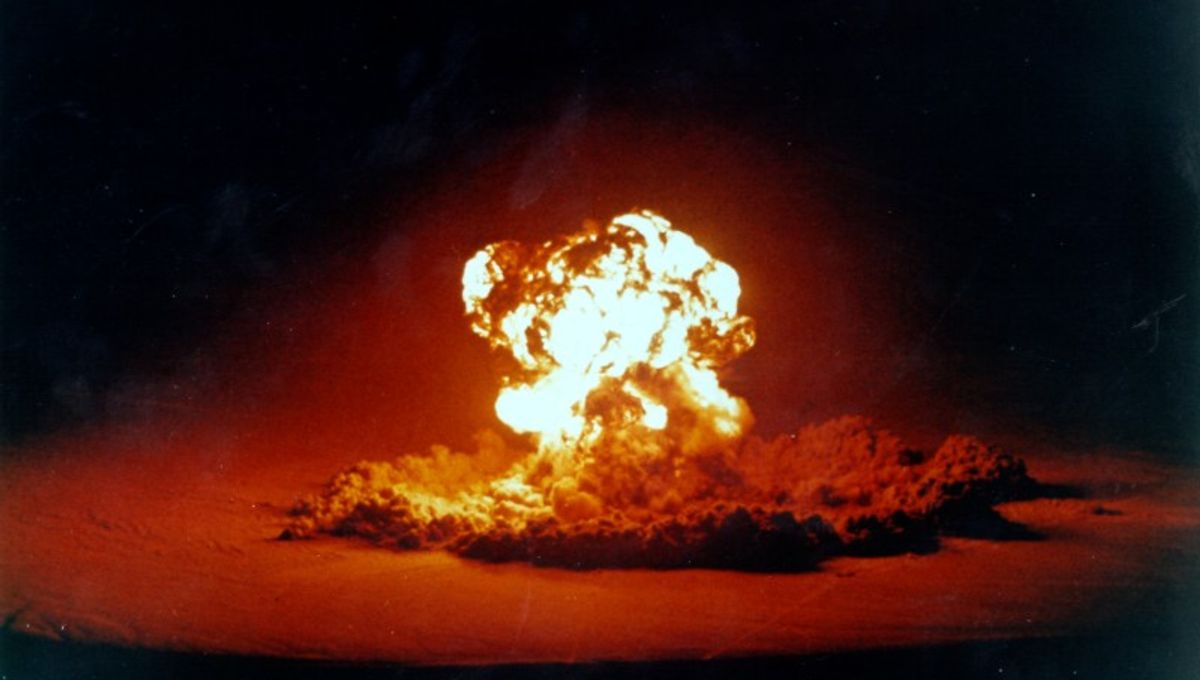
Despite the popularity of games like the Fallout series or shows such as The 100, the understanding among UK and US populations of the threats posed by nuclear weapons and a subsequent “nuclear winter” is dangerously low. According to a new survey published by the University of Cambridge’s Centre for the Study of Existential Risks (CSER), the public appreciation of the long-term and catastrophic consequences from any exchange of nuclear weapons is the lowest it has been since the Cold War.
A “nuclear winter” is the result of an exchange of nuclear weapons attacks by two or more states. Each warhead would create a firestorm and send huge amounts of soot and debris into the atmosphere, blocking out the sun for decades. Temperatures would drop across the world, even to sub-zero temperatures in many places, which would then lead to mass crop failure and widespread famine.
Then there’s the radioactive fallout. The soot and debris thrown into the atmosphere becomes radioactive because of the explosion, and would therefore be hazardous and largely lethal to animals and humans across the world.
The CSER’s survey was conducted online on January 25, 2023, and asked 3,000 participants to judge what they thought they knew about “nuclear winter” and if they had heard about it from contemporary media, academic research, or the beliefs held in the 1980s. The results showed that most knowledge about a nuclear winter was a legacy of older beliefs from the Cold War.
The survey also presented participants with fictional near-future media reports where Russia had used nuclear weapons against Ukraine, or the other way around, to measure the appetite for retaliation in the West. They found that in the event of a Russian nuclear attack on Ukraine, fewer than one in five people surveyed in both the US and UK approved of a nuclear retaliation, with men being more likely than women to support this measure.
Some of the survey’s participants also saw infographics that demonstrated the consequences of nuclear winter, as predicted by a study in Nature Food in August 2022, which estimated that over five billion people would die from a war between the US and Russia. Half the participants from each surveyed country were shown the infographics before they read the fictional reports about nuclear attacks, while the other half, a control group, only read the reports.
The results showed that support for a nuclear retaliation was actually lower among the participants who saw the infographics – 16 percent lower in the US and 13 percent in the UK. The survey also found that this effect was more pronounced among supporters of the current governments of both countries, with support for retaliation being 36 percent lower among US Democrats and 33 percent lower among UK Conservatives.
In a statement, Paul Ingram, the senior researcher working on the CSER survey, explained how worrying the results are. “Ideas of nuclear winter are predominantly a lingering cultural memory”, he said, “as if it is the stuff of history, rather than a horribly contemporary risk.”
“Of course it is distressing to consider large-scale catastrophes, but decisions need to account for all potential consequences, to minimise the risk,” he added.
The ongoing war in Ukraine has brought the threat of a nuclear conflict to a new generation and has raised profound questions about the ways that states respond to global risks. In fact, on January 24, 2023, the Doomsday Clock, the metaphorical and symbolic representation of how close the world is to a human-made global catastrophe, was set to 90 seconds to midnight. This is the closest it has been to midnight since its creation in 1947.
Yet while this is a devastating figure, a study in Risk Analysis has argued that small pockets of survivors would nevertheless still exist on the planet, even after the worst catastrophe. According to this research, island nations like Australia, New Zealand, Iceland, the Solomon Islands and Vanuatu would be the most capable of producing food to sustain human existence.
The full results from the CSER polling are available here.
Source Link: We Are Not Frightened Enough – Nuclear Weapons And The Horrors They Pose